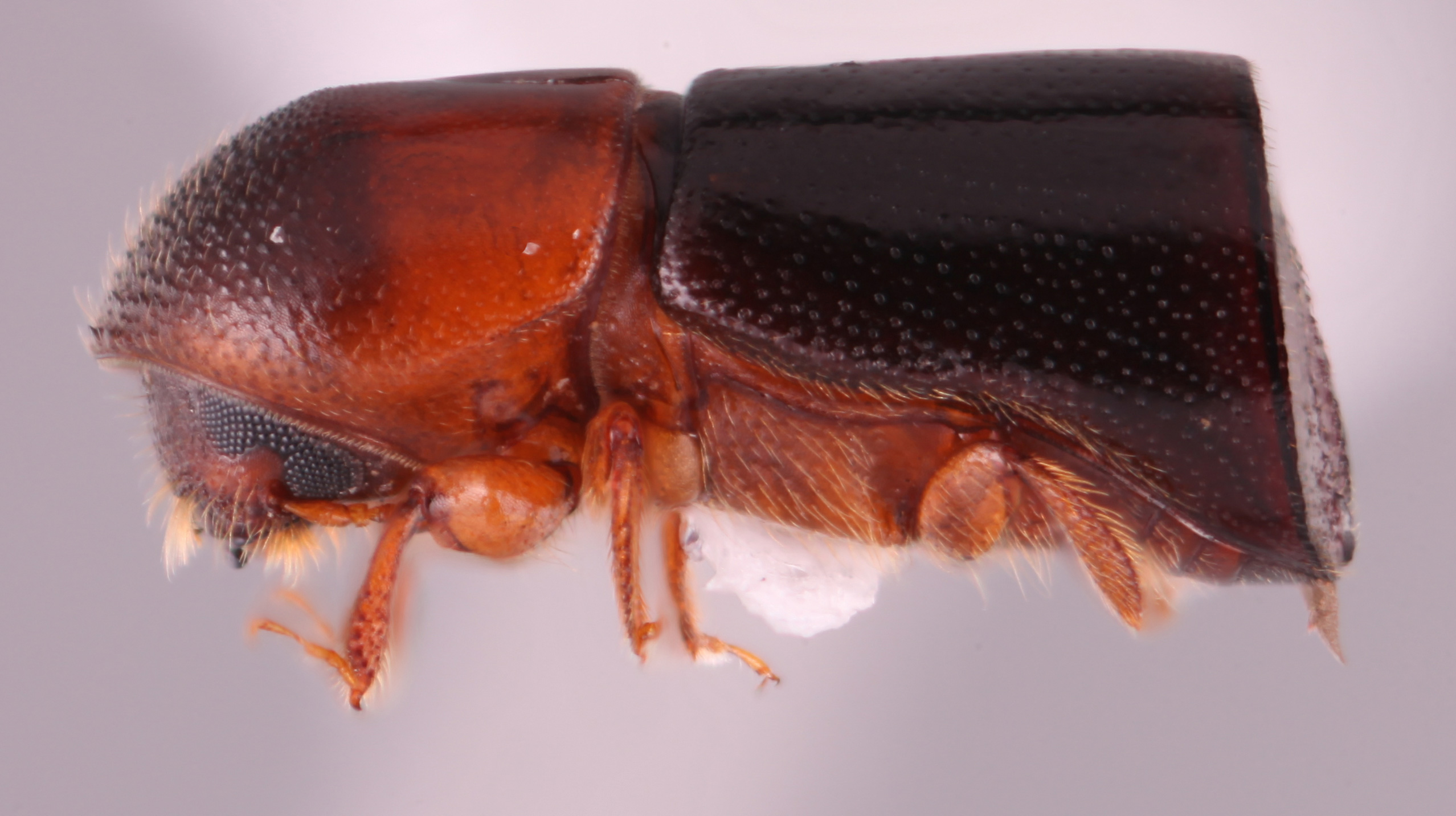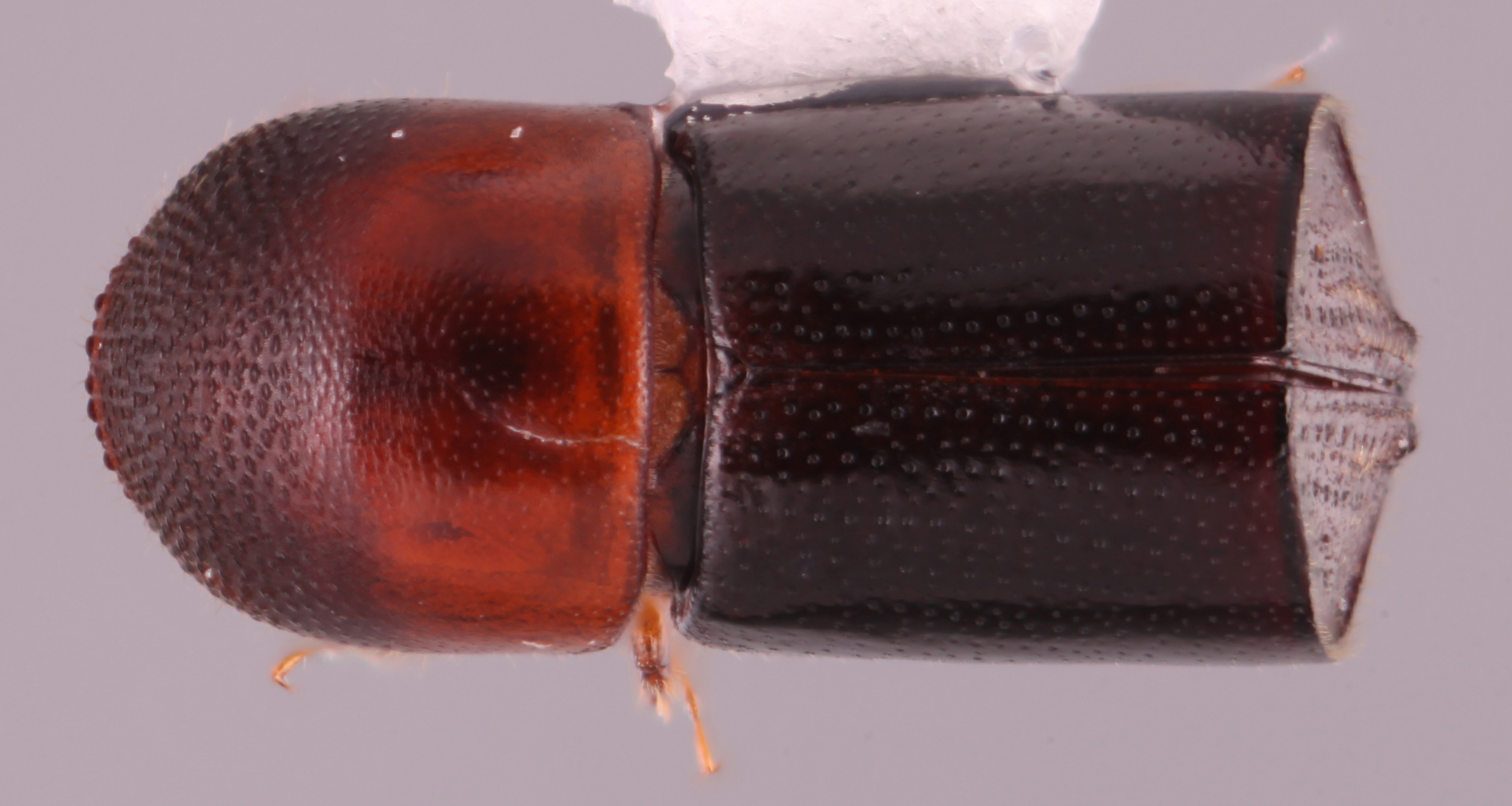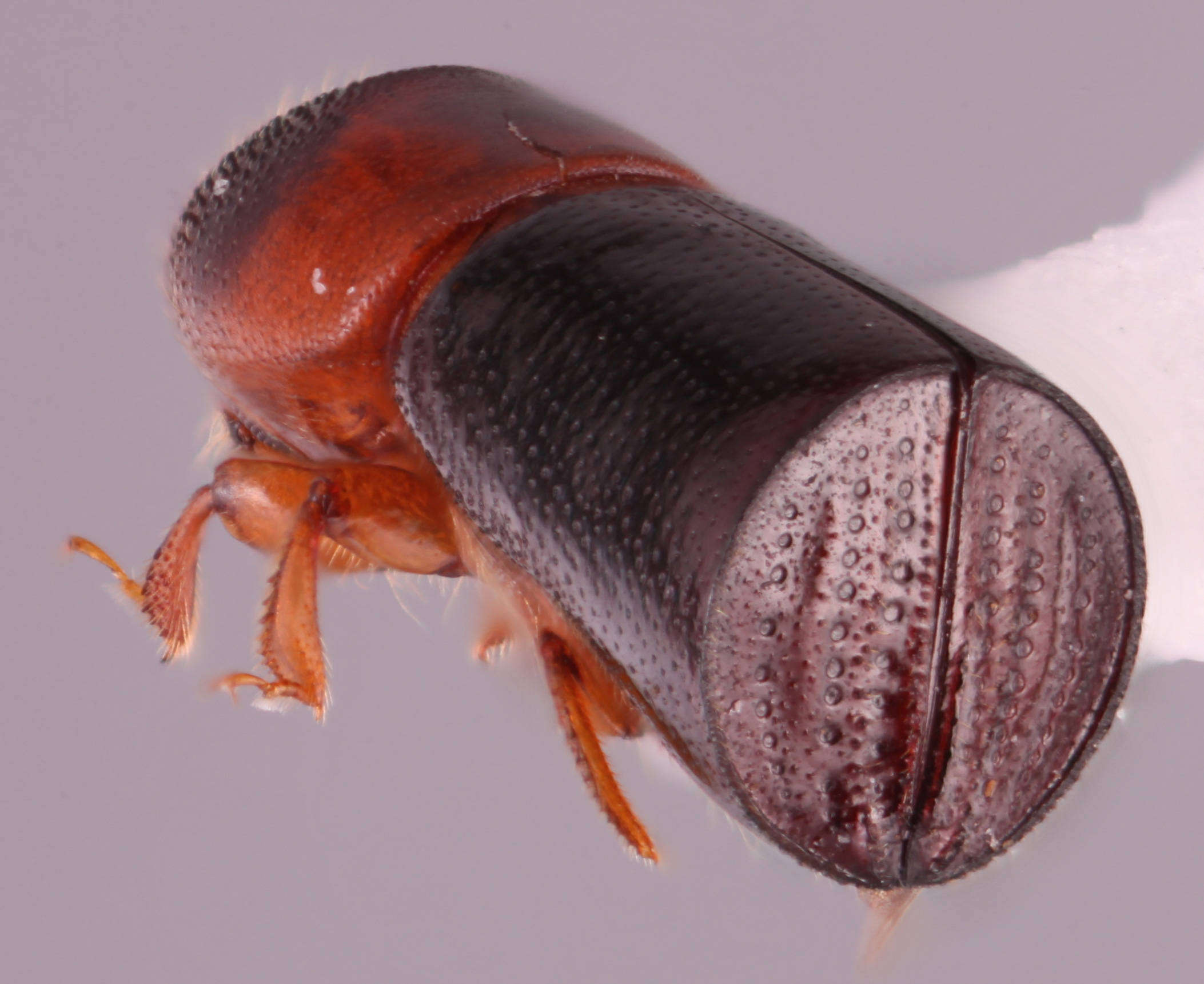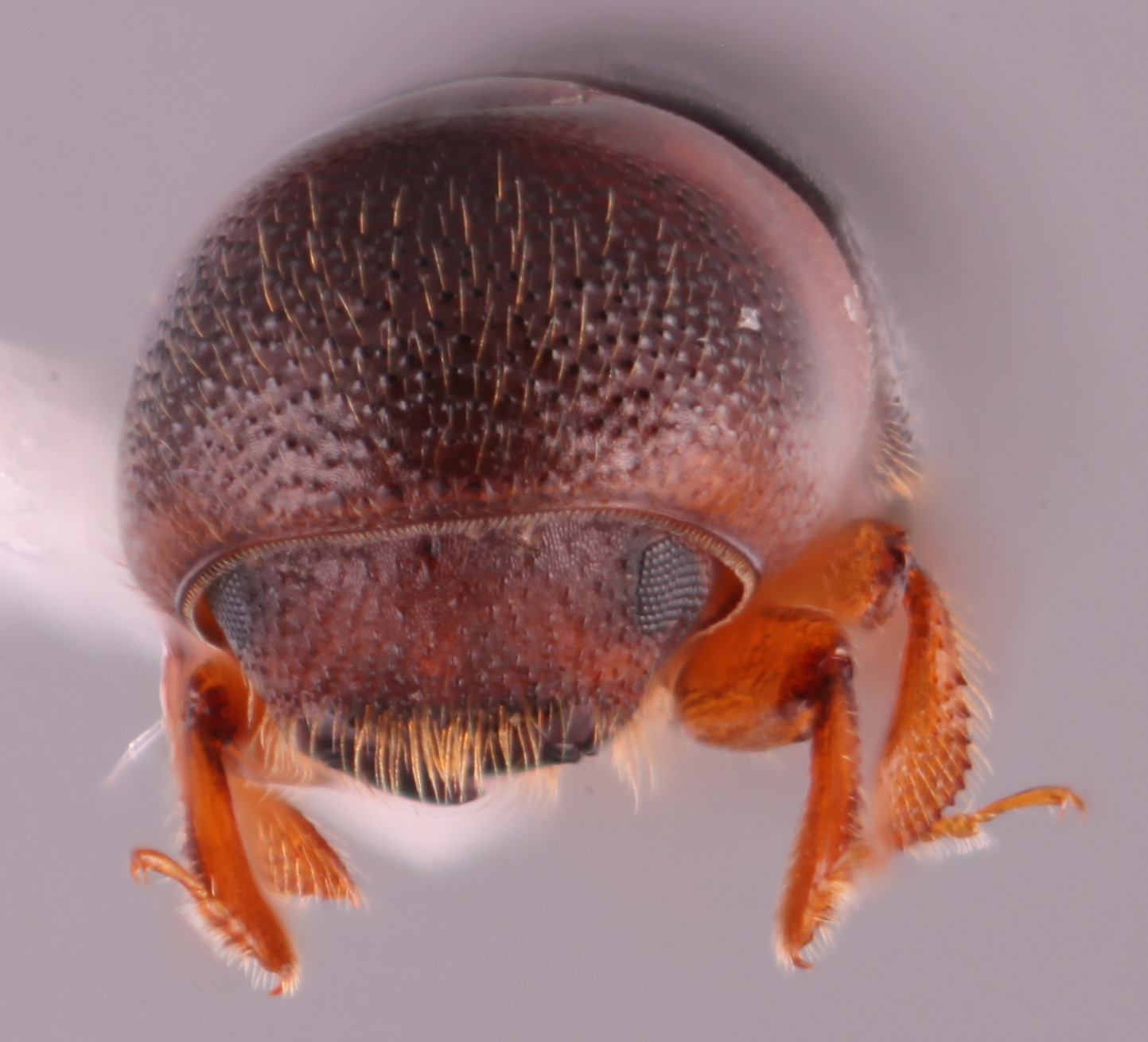Amasa youlii
|
Amasa youlii holotype lateral; S.M. Smith |
|
Amasa youlii holotype dorsal; S.M. Smith |
|
Amasa youlii holotype declivity; S.M. Smith |
|
Amasa youlii holotype frontal; S.M. Smith |
Taxonomic history
Amasa youlii Smith, Beaver & Cognato 2020 (in Smith et al. 2020bSmith et al. 2020b:
Smith SM, Beaver RA, and Cognato AI. 2020b. A monograph of the Xyleborini (Coleoptera, Curculionidae, Scolytinae) of the Indochinese Peninsula (except Malaysia) and China. ZooKeys 983: 1-442. https://doi.org/10.3897/zookeys.983.52630): 47.
Diagnosis
2.9−3.0 mm long (mean = 2.93 mm; n = 3); 2.42−2.5 times as long as wide. This species can be distinguished by the pronotumpronotum:
the dorsal surface of the thorax
appearing basic (type 2) when viewed dorsally, anterioranterior:
the front or forward; opposite of posterior margin serrate; elytralelytral:
margin serrate; elytralelytral:
pertaining to the elytra
declivitaldeclivital:
pertaining to the elytral declivity
surface smooth, moderately shiningshining:
appearing glossy or bright in luster; referring to a surface that is polished and reflects light well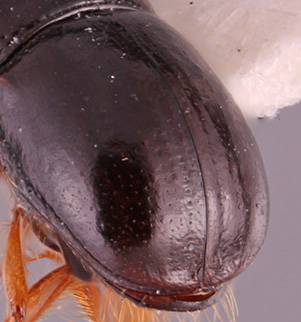 ; small size; declivitaldeclivital:
; small size; declivitaldeclivital:
pertaining to the elytral declivity
interstriae setose, setaeseta:
small hair-like or scale-like structure
recumbentrecumbent:
pertaining to setae that are flat against the cuticle
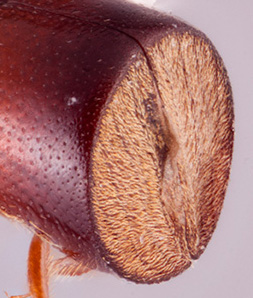 ; declivitaldeclivital:
; declivitaldeclivital:
pertaining to the elytral declivity
face flattened; and interstriaeinterstria:
longitudinal spaces along the elytra between the striae, which is not as<br />
impressed and bear smaller punctures.
 1 weakly inflatedinflated:
1 weakly inflatedinflated:
blown up; distended
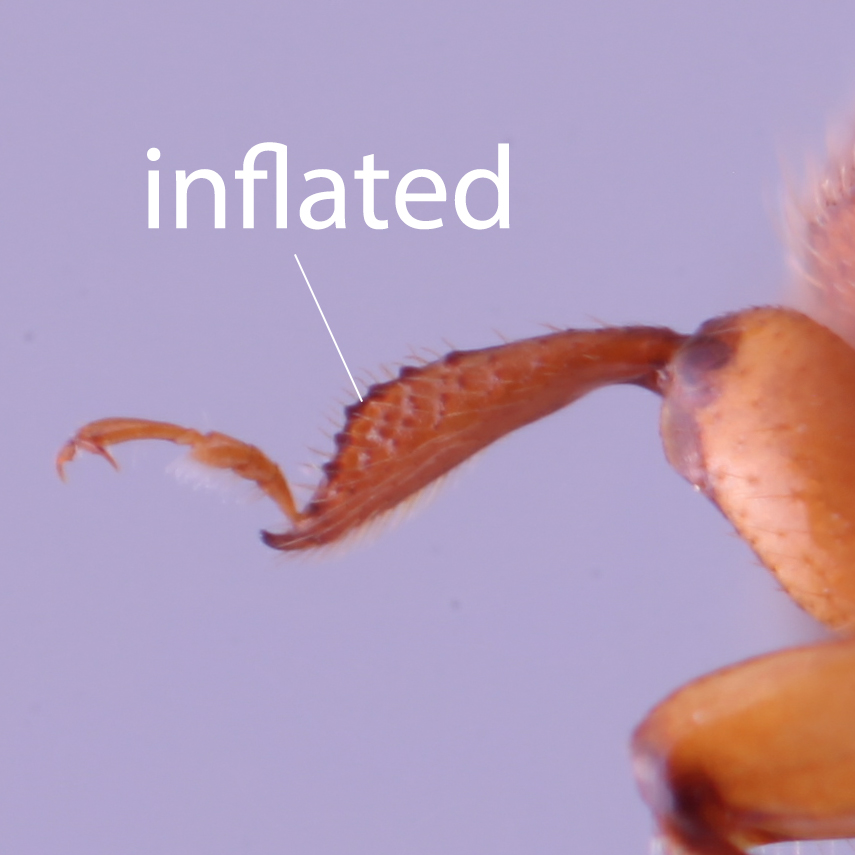 from apexapex:
from apexapex:
point or edge furthest from the body; opposite of base
 to near midpoint of declivitydeclivity:
to near midpoint of declivitydeclivity:
downward slope of either the pronotum or elytra
 ; striaestria:
; striaestria:
punctures in rows, which may or may not be impressed to make grooves 3 strongly displaced laterad, striaestria:
3 strongly displaced laterad, striaestria:
punctures in rows, which may or may not be impressed to make grooves 1−3 not appearing equidistant.
1−3 not appearing equidistant.
May be confused with
Amasa concitata, A. gibbosa, A. lini, and A. tropidacron
Distribution
China (Fujian)
Host plants
unknown (Smith et al. 2020bSmith et al. 2020b:
Smith SM, Beaver RA, and Cognato AI. 2020b. A monograph of the Xyleborini (Coleoptera, Curculionidae, Scolytinae) of the Indochinese Peninsula (except Malaysia) and China. ZooKeys 983: 1-442. https://doi.org/10.3897/zookeys.983.52630)
DNA data
Sequences available for COI and CAD.
COI: MN619809
CAD: MN620109

